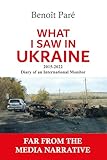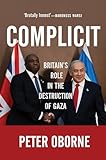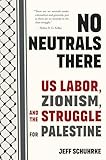In recent months, the Israeli Defense Forces have been much taken by a term that augurs poorly for peaceful accord in the Middle East. “Security zones” are being seized in the Gaza Strip, Lebanon and Syria. Land is, for claimed reasons of self-defence, being appropriated with brazen assuredness. It is hard, however, to see this latest turn as anything other than a de facto military occupation, a situation that will prolong the crisis of vulnerability the Jewish state so wishes to overcome. Israel’s insecurities are much the result of various expansions since 1948 that have only imperilled it to future attack and simmering acrimony. The pattern threatens to repeat itself.
In Syria, Israel rapidly capitalised on the fall of the Assad regime by shredding the status quo. Within a matter of 11 days after the fleeing of the former President Bashar Al-Assad to Moscow, and again on February 1 this year, satellite images showed six military sites being constructed within what is nominally the UN-supervised demilitarised zone, otherwise known as the Area of Separation. A seventh is being constructed outside the zone and in Syria proper. Such busy feats of construction have also accompanied Israeli encroachment on the land of Syrian civilians, coupled with vexing housing raids, road closures and unsanctioned arrests.
All this has taken place despite undertakings from Syria’s transitional President Ahmed al-Sharaa that he would recognise the 1974 agreement made with Israel, one which prohibits Israel from crossing the Alpha Line on the western edge of the Area of Separation. “Syria’s war-weary condition, after years of conflict and war, does not allow for new confrontations,” admitted the new leader on December 14, 2024. Israeli Prime Minister Benjamin Netanyahu was only scornful, regarding the 1974 agreement between the two countries as a dead letter buried by history. “We will not allow any hostile force to establish itself on our border,” he snottily declared.
Lebanon is also facing a stubborn IDF, one that refuses to abide by the Israel-Hezbollah agreement last November which promised the withdrawal of both forces from southern Lebanon, leaving the Lebanese army to take over the supervising reins. Lebanese President Joseph Aoun, who faces the herculean task of removing Hezbollah’s weapons while potentially integrating members of its group into the Lebanese army, has found his task needlessly onerous. In recent discussions with US deputy Mideast envoy Morgan Ortagus, the Lebanese leader reasoned “that Israel’s presence in the five disputed points gives Hezbollah a pretext to keep its weapons.”
On April 16, Israeli Defence Minister Israel Katz promised that such security zones would provide relevant buffers to shield Israeli communities. Ominously, the IDF would “Unlike in the past [not evacuate] areas that have been cleared and seized”. They would “remain in the security zones as a buffer between the enemy and [Israeli] communities in any temporary or permanent situation in Gaza – as in Lebanon and Syria.”
In Gaza, it is becoming increasingly clear that any prospect of Palestinian autonomy or political independence is to be strangled and snuffed out. Israel has already arbitrarily created the “Morag Corridor”, which excises Rafah from the Strip, and the Netzarim Corridor, which severs Gaza in half. Katz has also promised that the policy of blocking all food, medicine and other vital supplies to Gaza implemented on March 2 will continue, as it “is one of the main pressure levers preventing Hamas from using it as a tool with the population”.
Displacement orders, euphemised as “evacuation orders”, have become the staple of operating doctrine, the means of creating buffers of guns and steel. On April 11, Israeli authorities issued two such orders, effectively “covering vast areas in northern and southern Gaza”, according to UN spokesperson Stéphane Dujarric. “Together, these areas span more than 24 square kilometres – roughly the size of everything south of Central Park here in Manhattan.” Within these zones of military seizure lie medical facilities and storage sites filled with vital supplies.
The UN Human Rights office also expressed its concerns about Israel seemingly “inflicting on Palestinians in Gaza conditions of life increasingly incompatible with their continued existence as a group in Gaza.” The population was being “forcibly transferred into ever shrinking spaces with little or no access to life-saving services, including water, food, and shelter, and whey they continue to be subject to attacks.” Engaging in such conduct against a civilian population within an occupied territory, the office pointedly observes, satisfies the definition of a forcible transfer, being both a violation of the Fourth Geneva Convention and a crime against humanity under the Rome Statute of 1998.
The latest doctrine of appropriation and indeterminate occupation adopted by Katz and the IDF has not impressed the Hostages and Missing Families Forum in Israel, long advocating for the release of Israeli hostages still being held in Gaza by Hamas. “They promised that the hostages come before everything,” came the organisation’s aggrieved observation. “In practice, however, Israel is choosing to seize territory before the hostages.” In doing so, the prerogatives of permanent conflict and habitual predation have displaced the more humane prerogatives of peace.










